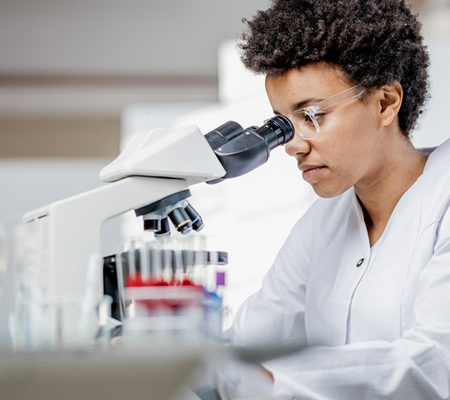
A bone marrow biopsy is used to detect certain blood conditions, including leukemia, and to know whether cancer has spread to the bone marrow.
In the center of most large bones there is a soft tissue called bone marrow. This soft tissue is what makes most of the body’s blood cells.
In adults, bone marrow is active in the flat bones, such as the bones of the pelvis and in particular, the iliac crest and the breastbone. In children, bone marrow is in the long bones such as the femur.
After explaining the process and getting permission, your doctor will identify the bone and mark it. The doctor uses a sterile technique to clean the skin, and then numbs the skin and bone. The doctor is very careful to make sure the area is numb before starting and then inserts the bone marrow needle in the bone and removes a sample of bone marrow tissue for testing.
Why might I need a bone marrow biopsy?
Your doctor will recommend a bone marrow biopsy if they think you have a problem with blood cell production.
“There are many reasons for your health care provider to recommend a bone marrow biopsy,” said Dr. Arlene Gayle, medical oncologist/hematologist with Marshfield Clinic Health System.
A pathologist in the lab examines blood and bone marrow samples. By using a microscope with special lab techniques, the pathologist can check the bone marrow for:
- Unexplained anemia (a decrease in the number of red blood cells).
- Abnormal numbers of blood cells (red blood cells, white blood cells or platelets).
- Bleeding or clotting disorders (such as hemophilia).
- Iron deficiency.
- Inherited blood disorders (such as thalassemia or sickle cell disease).
- Leukemia (a cancer of the blood-forming tissue).
- Cancers that have spread to the bone marrow.
- Response to chemotherapy.
What are the risks?
As with any surgical procedure, complications can occur at or near the biopsy site, which may include:
- Bruising and discomfort.
- Prolonged bleeding.
- Infection.
“There may be other risks depending on your specific medical condition. Be sure to discuss any concerns with your provider prior to the procedure,” said Gayle.
You should tell your provider if you have any allergies, are using any medicines, have a history of bleeding disorders or are pregnant.
Once you are home, it is important for you to keep the biopsy area clean and dry. Leave the bandage in place for as long as instructed by your doctor.
The biopsy site may be tender or sore for several days after the bone marrow biopsy. Take a pain reliever for soreness as recommended by your doctor.
For more information about a bone marrow biopsy, talk to your doctor.






Leave a Reply